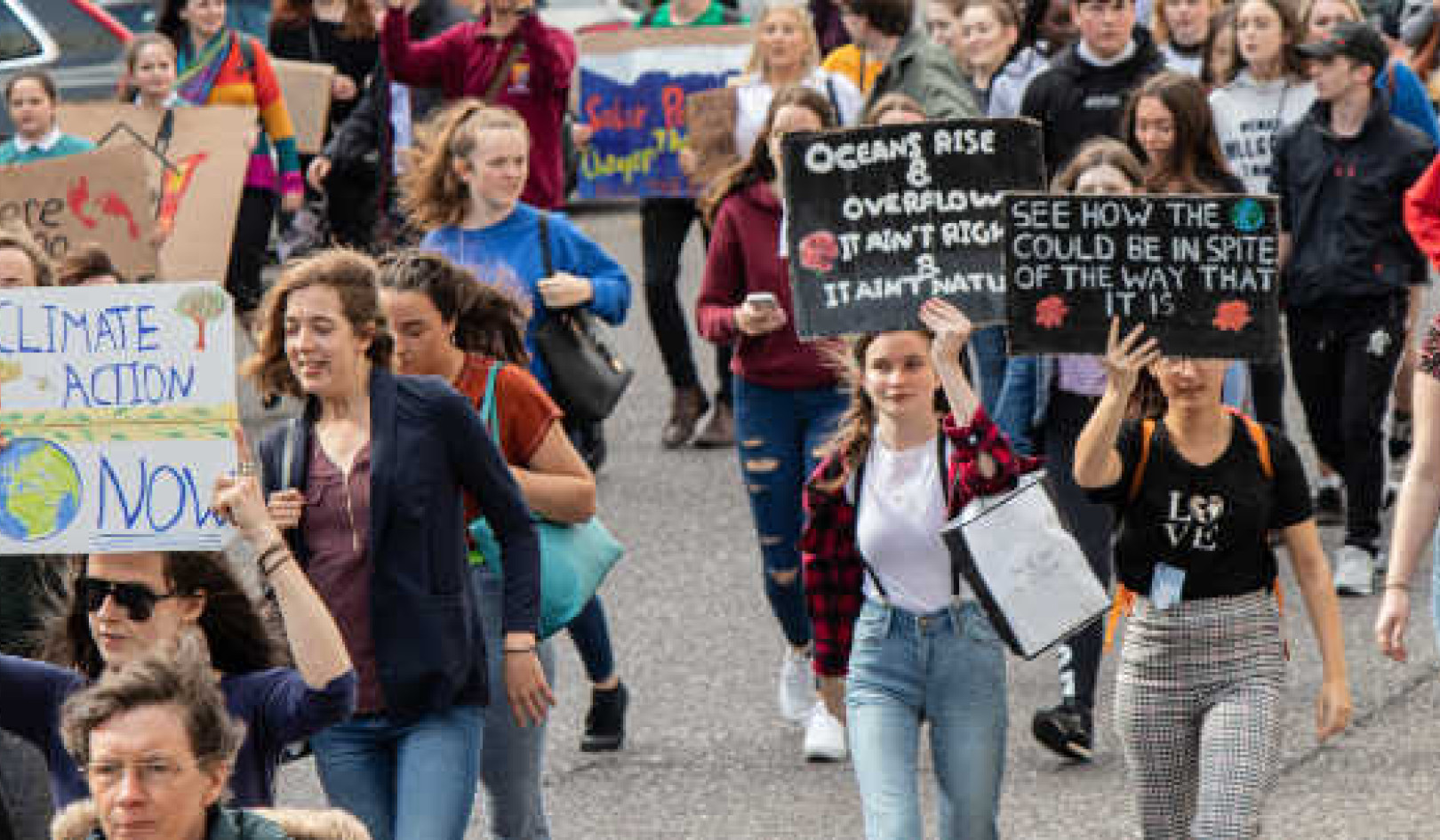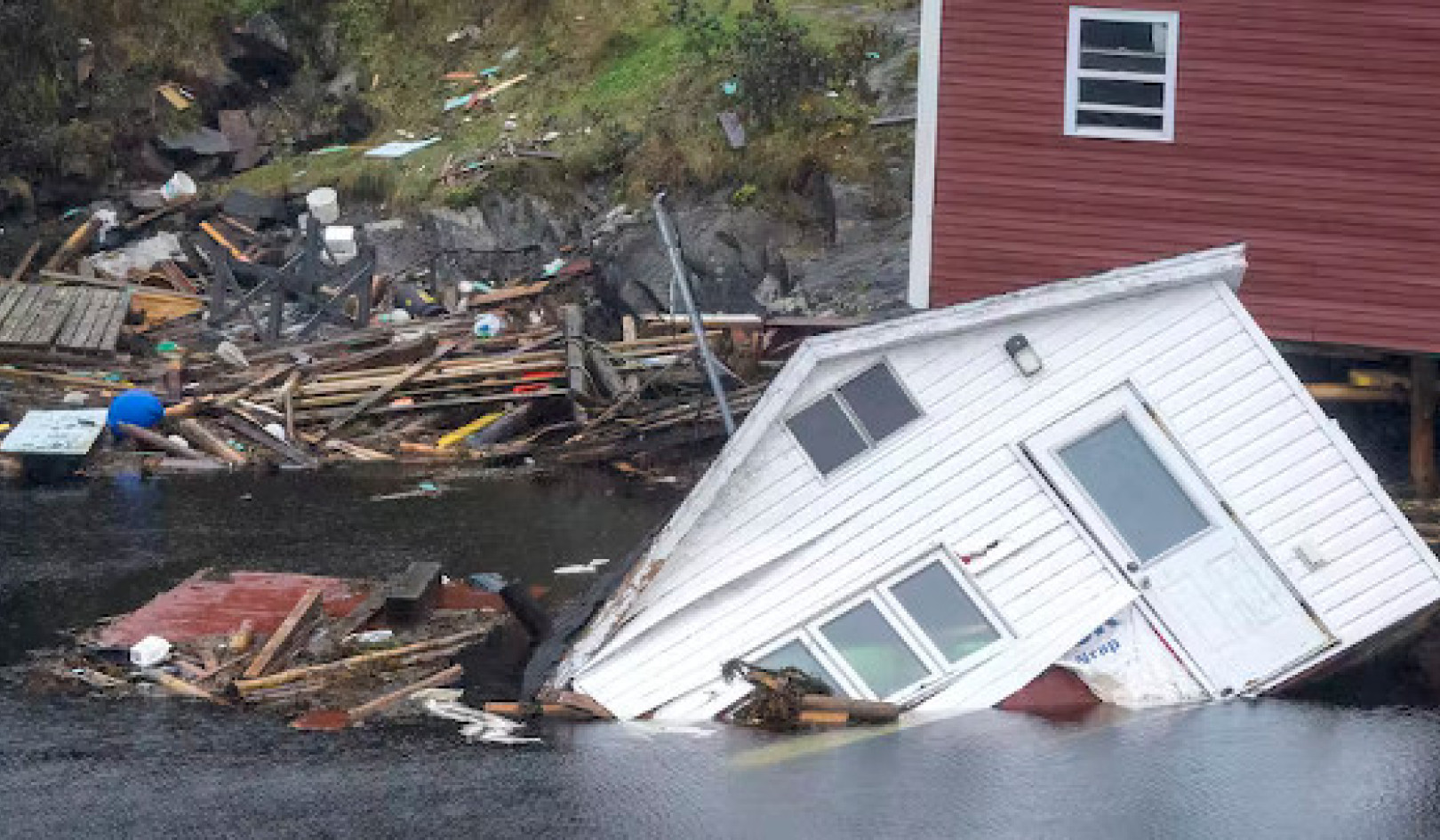
Trevor Noah appears on set during a taping of “The Daily Show with Trevor Noah” in New York, 2015. Researchers say humour is one of the best tools to fight against climate change. (Evan Agostini/Invision/AP)
This year, three studies showed that humour is useful for engaging the public about climate change. The studies, published in The Journal of Science Communication, Comedy Studies and Science Communication, added to the growing wave of scientists, entertainers and politicians who agree.
In March 2017, the American Psychological Association published a report defining ecoanxiety as “chronic fear of environmental doom.” The report referred to literature that described an increase in depression and anxiety caused by peoples’ “inability to feel like they are making a difference in stopping climate change.”
With psychological stakes this high, humour may seem inappropriate. But Phil McCordic — a Canadian actor, writer and producer of children’s programming and the host of TVOntario’s Science Max educational series — thinks it could be a way to access “the attention of a lot of people you wouldn’t have otherwise.”
“Humour is so useful for children’s programming because it grabs attention,” says McCordic, who adds he believes this can be applied to adults too.
“Climate-change humour stops people from worrying about their politics and lets them take in the information …. Scientists don’t always understand their audience. Getting someone to laugh is half of the work of getting them to understand.”
McCordic’s views are echoed by researchers such as Christofer Skurka, assistant professor of film and media studies at the Bellisario College of Communications at the University of Pennsylvania. His research has shown that humour is a useful tool for making 18- to 24-year-olds more politically engaged in climate change.

John Oliver speaks in New York in February 2015. (Charles Sykes/Invision/AP)
Beth Osnes is an associate professor of theatre at the University of Colorado at Boulder. Her research shows that the creative techniques used in theatre are a useful tool for climate-change communication. Osnes says that communicating climate change to young people using humour is “magical.”
“Climate change isn’t a laughing matter but sometimes you have to laugh at your pain to get to a solution,” she says.
Climate comedy has wide-ranging applications
The climate-change humour trend isn’t isolated to research institutions. Using comedy to tackle climate-change debate is found in mainstream media, including in the comedy of comedian John Oliver and The Late Show host Stephen Colbert.
The Onion, a landmark American satirical media outlet, has headlines that include “Report: If Earth Continues To Warm At Current Rate Moon Will Be Mostly Underwater By 2400” and “Sighing, Resigned Climate Scientists Say To Just Enjoy Next 20 Years As Much As You Can.”
YouTuber Adam Levy, who earned a doctorate in atmospheric physics from Oxford University and operates under the handle Climate Adam, uses humour to make climate-change science more accessible.
“Science should be serious! But it should also be funny, challenging, impressive and a range of other things,” says Levy. “I want to make climate change less scary by tapping into that funny side.”
The usefulness of climate-change humour in the political sphere is also raised by Tim Grant, who was the Green Party candidate for the Toronto riding of University-Rosedale in the Oct. 21 federal election. Grant is also the co-editor of the environmental education magazine Green Teacher, which is described on its website as “dedicated to helping educators, both inside and outside of schools, promote environmental awareness among young people aged 6-19.”
Grant says those under the age of 16 are “developmentally unready to deal with the climate crisis.” He says when they find out about climate change, they “feel hopeless” and this discourages them from taking part in the political process when they reach voting age as their anxiety and sense of helplessness persists.
Humour is a way to introduce the issues associated with climate change while allowing young people to remain engaged when they’re older, Grant says.
Instead of minimizing the grave nature of climate change, humour can have the power to maximize the impact of climate-change science and the media.
About the Author
Lakshmi Magon, Dalla Lana Global Journalism Fellow, Science Communicator, University of Toronto
This article is republished from The Conversation under a Creative Commons license. Read the original article.
Related Books
Climate Adaptation Finance and Investment in California
by Jesse M. Keenan This book serves as a guide for local governments and private enterprises as they navigate the unchartered waters of investing in climate change adaptation and resilience. This book serves not only as a resource guide for identifying potential funding sources but also as a roadmap for asset management and public finance processes. It highlights practical synergies between funding mechanisms, as well as the conflicts that may arise between varying interests and strategies. While the main focus of this work is on the State of California, this book offers broader insights for how states, local governments and private enterprises can take those critical first steps in investing in society’s collective adaptation to climate change. Available On Amazon
This book serves as a guide for local governments and private enterprises as they navigate the unchartered waters of investing in climate change adaptation and resilience. This book serves not only as a resource guide for identifying potential funding sources but also as a roadmap for asset management and public finance processes. It highlights practical synergies between funding mechanisms, as well as the conflicts that may arise between varying interests and strategies. While the main focus of this work is on the State of California, this book offers broader insights for how states, local governments and private enterprises can take those critical first steps in investing in society’s collective adaptation to climate change. Available On Amazon
Nature-Based Solutions to Climate Change Adaptation in Urban Areas: Linkages between Science, Policy and Practice
by Nadja Kabisch, Horst Korn, Jutta Stadler, Aletta Bonn This open access book brings together research findings and experiences from science, policy and practice to highlight and debate the importance of nature-based solutions to climate change adaptation in urban areas. Emphasis is given to the potential of nature-based approaches to create multiple-benefits for society.
This open access book brings together research findings and experiences from science, policy and practice to highlight and debate the importance of nature-based solutions to climate change adaptation in urban areas. Emphasis is given to the potential of nature-based approaches to create multiple-benefits for society.
The expert contributions present recommendations for creating synergies between ongoing policy processes, scientific programmes and practical implementation of climate change and nature conservation measures in global urban areas. Available On Amazon
A Critical Approach to Climate Change Adaptation: Discourses, Policies and Practices
by Silja Klepp, Libertad Chavez-Rodriguez This edited volume brings together critical research on climate change adaptation discourses, policies, and practices from a multi-disciplinary perspective. Drawing on examples from countries including Colombia, Mexico, Canada, Germany, Russia, Tanzania, Indonesia, and the Pacific Islands, the chapters describe how adaptation measures are interpreted, transformed, and implemented at grassroots level and how these measures are changing or interfering with power relations, legal pluralismm and local (ecological) knowledge. As a whole, the book challenges established perspectives of climate change adaptation by taking into account issues of cultural diversity, environmental justicem and human rights, as well as feminist or intersectional approaches. This innovative approach allows for analyses of the new configurations of knowledge and power that are evolving in the name of climate change adaptation. Available On Amazon
This edited volume brings together critical research on climate change adaptation discourses, policies, and practices from a multi-disciplinary perspective. Drawing on examples from countries including Colombia, Mexico, Canada, Germany, Russia, Tanzania, Indonesia, and the Pacific Islands, the chapters describe how adaptation measures are interpreted, transformed, and implemented at grassroots level and how these measures are changing or interfering with power relations, legal pluralismm and local (ecological) knowledge. As a whole, the book challenges established perspectives of climate change adaptation by taking into account issues of cultural diversity, environmental justicem and human rights, as well as feminist or intersectional approaches. This innovative approach allows for analyses of the new configurations of knowledge and power that are evolving in the name of climate change adaptation. Available On Amazon
From The Publisher:
Purchases on Amazon go to defray the cost of bringing you InnerSelf.comelf.com, MightyNatural.com, and ClimateImpactNews.com at no cost and without advertisers that track your browsing habits. Even if you click on a link but don't buy these selected products, anything else you buy in that same visit on Amazon pays us a small commission. There is no additional cost to you, so please contribute to the effort. You can also use this link to use to Amazon at any time so you can help support our efforts.


























